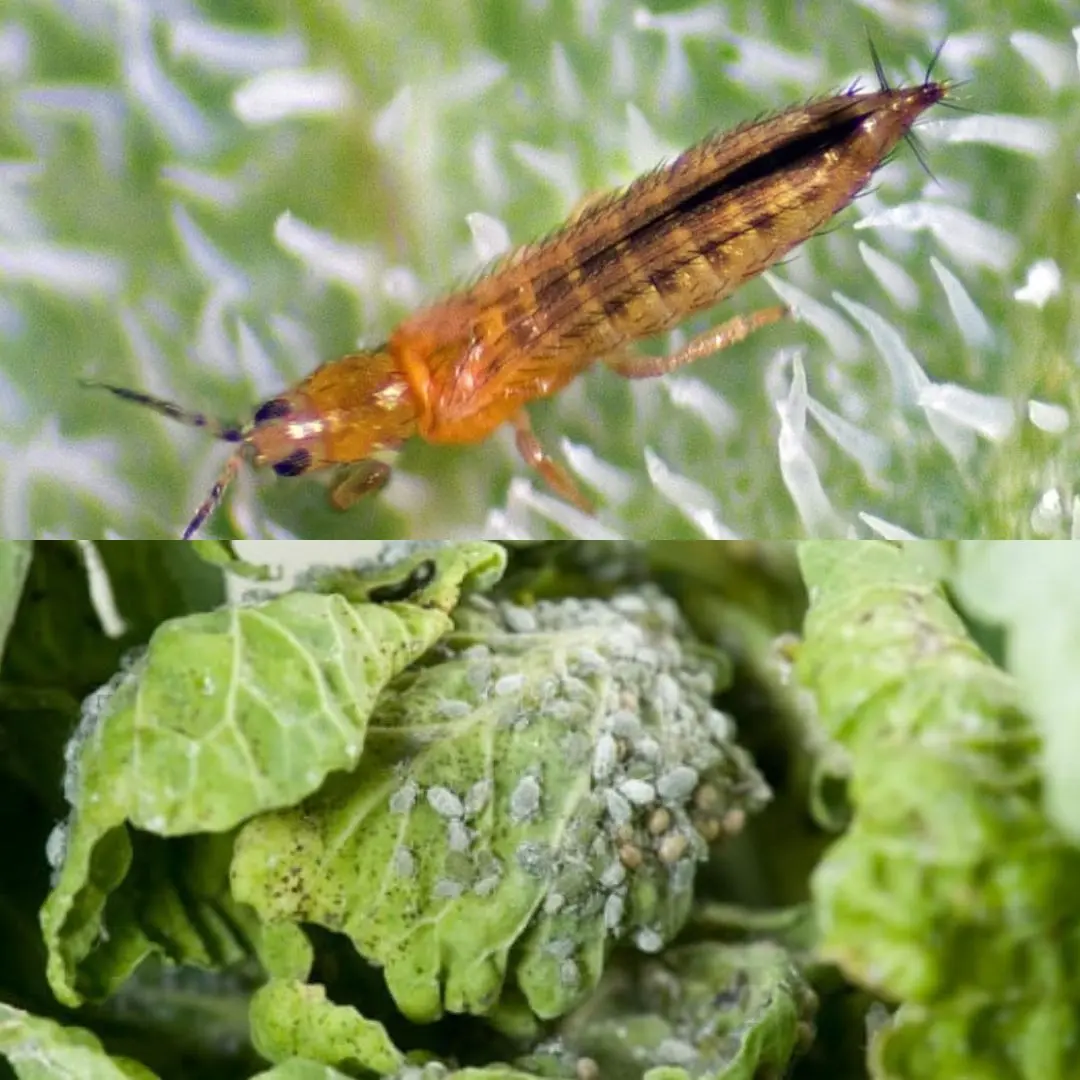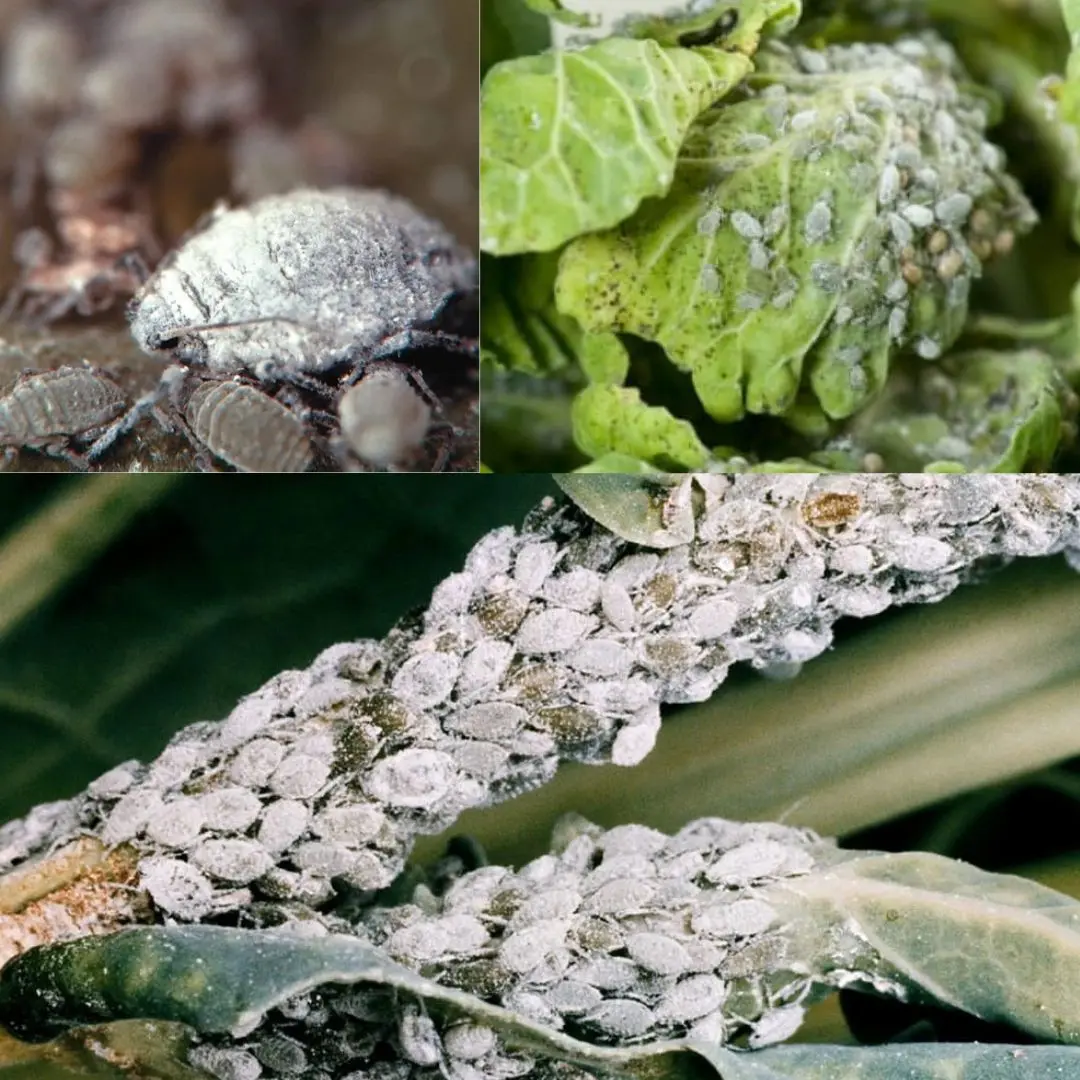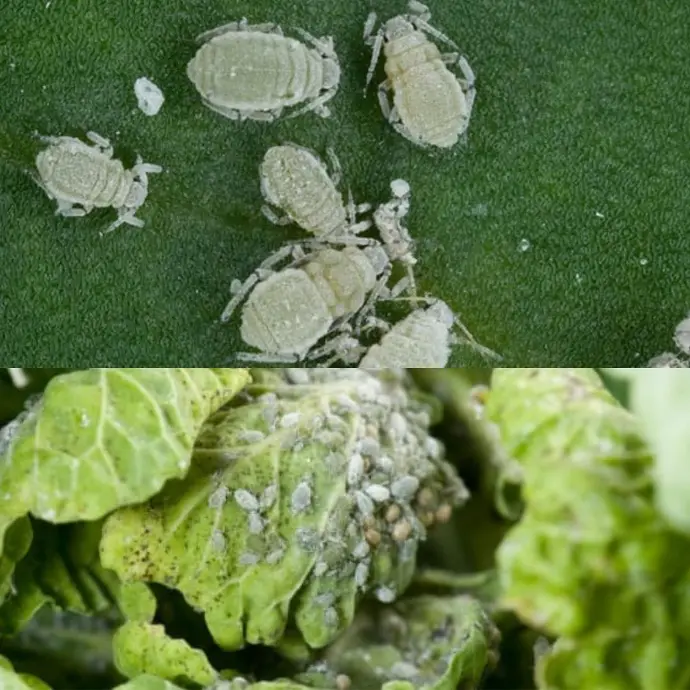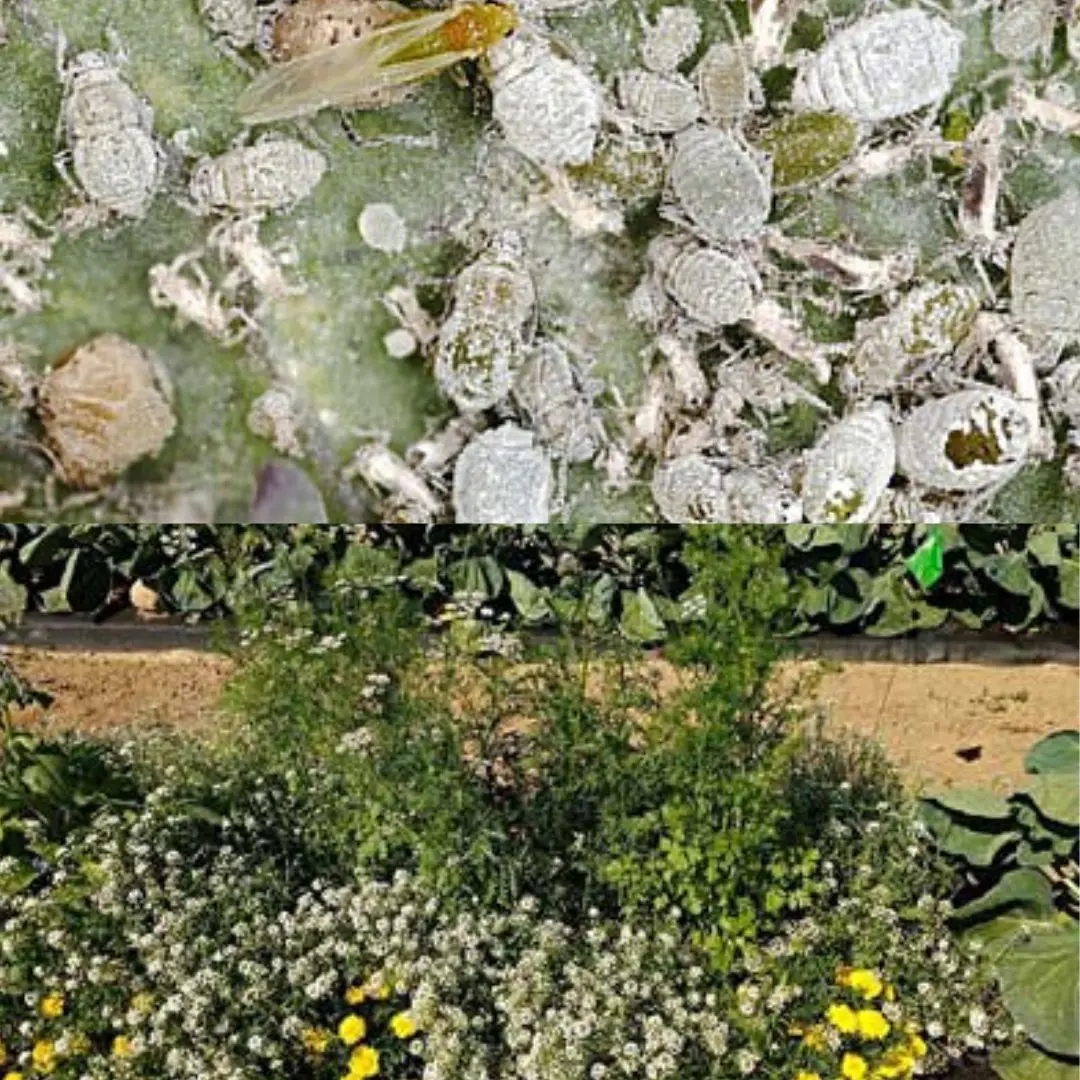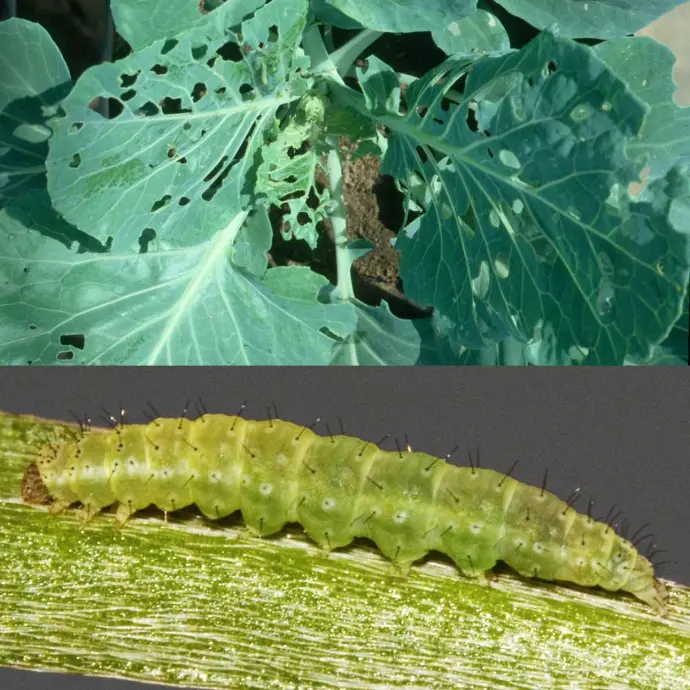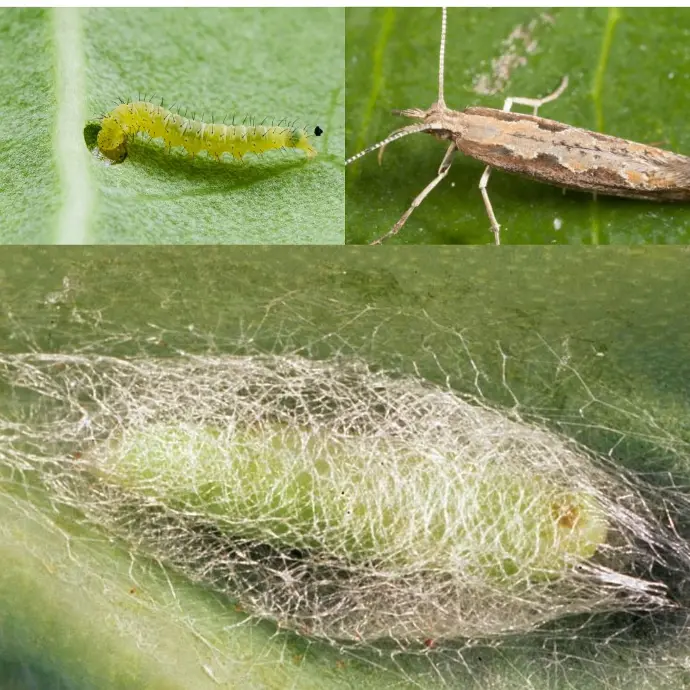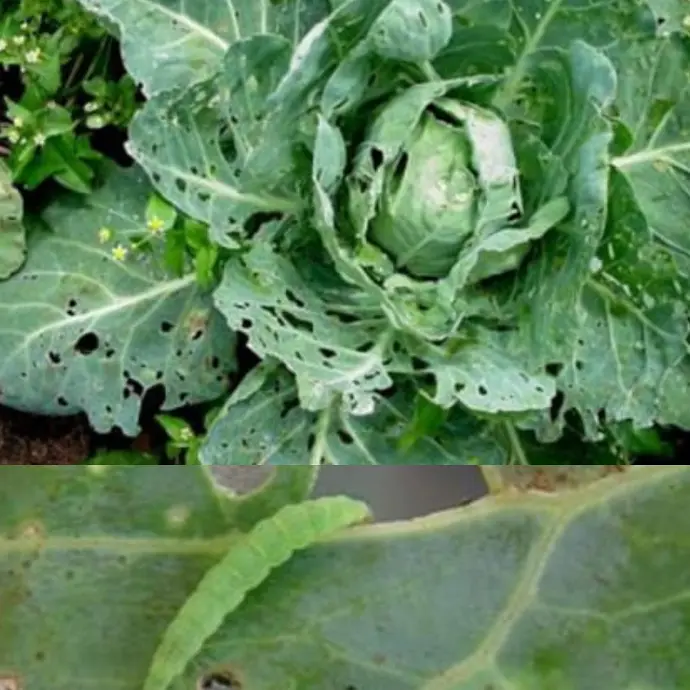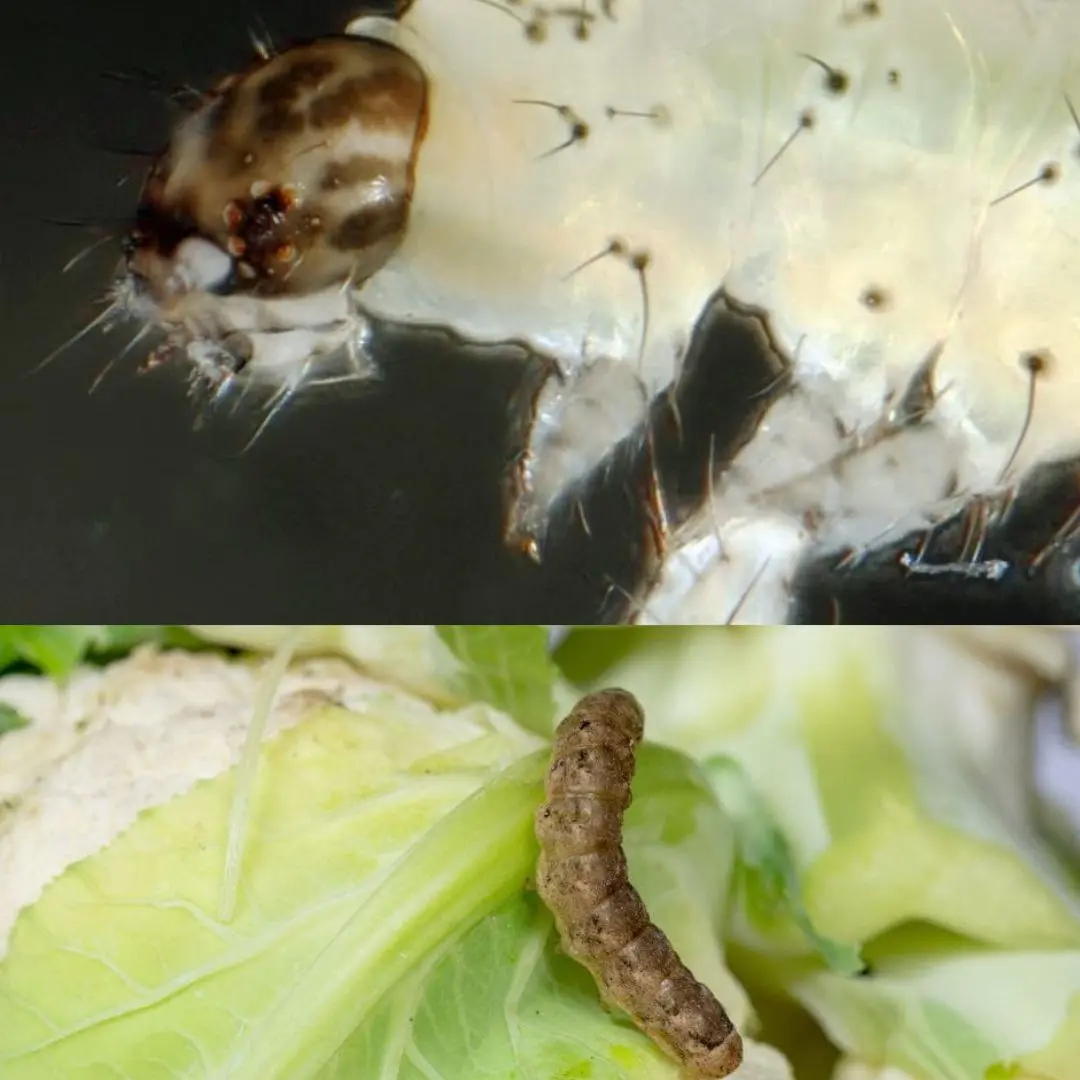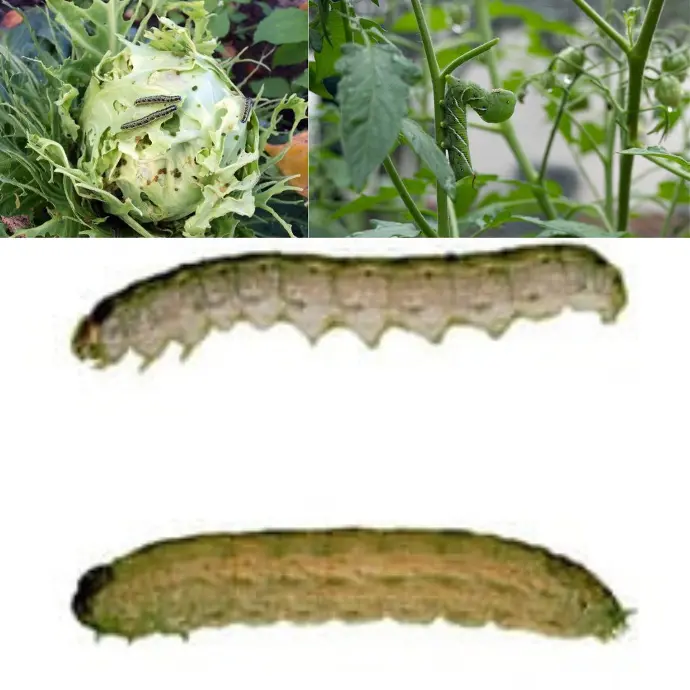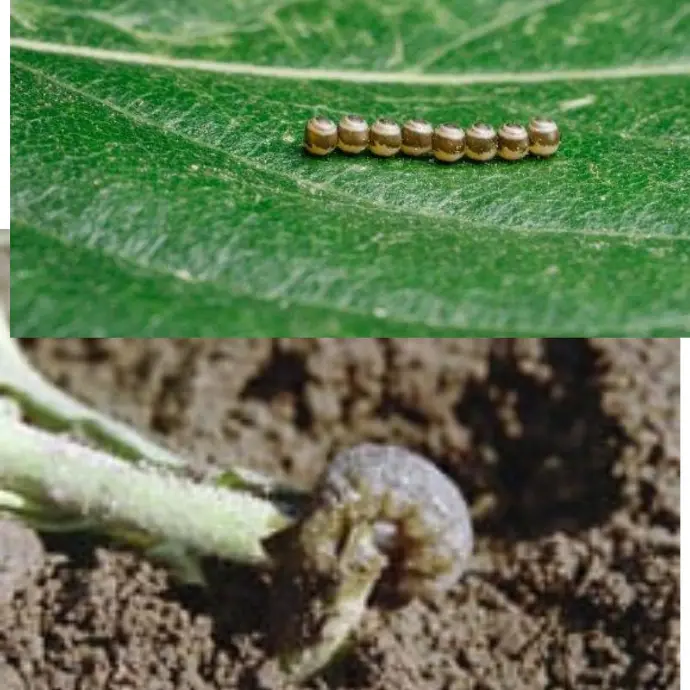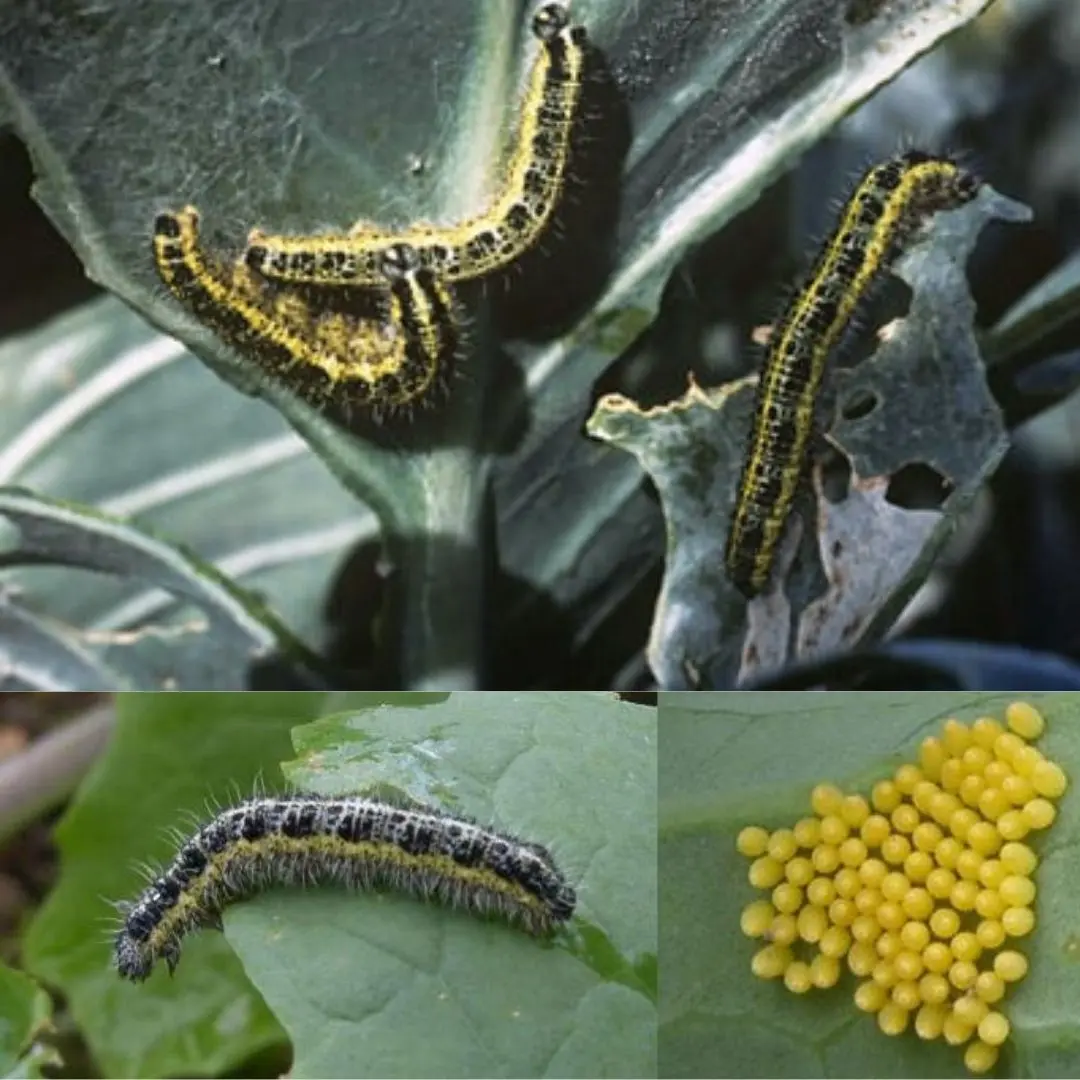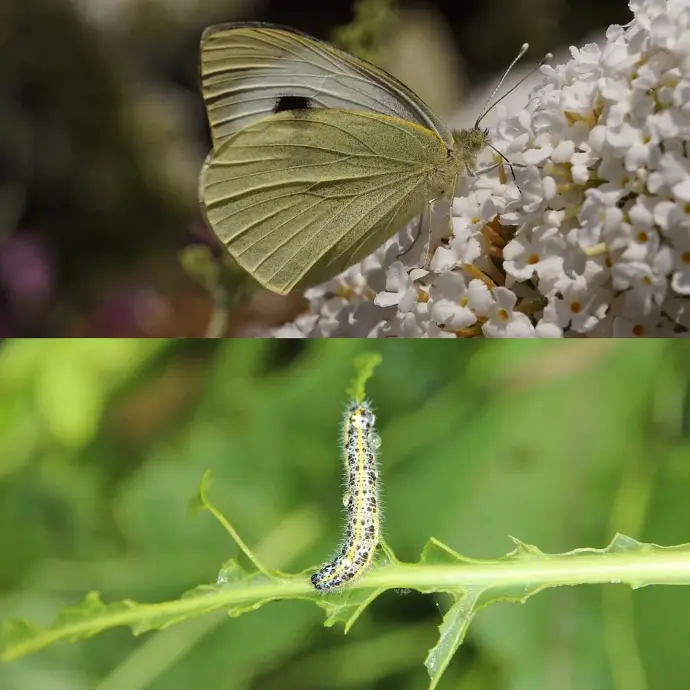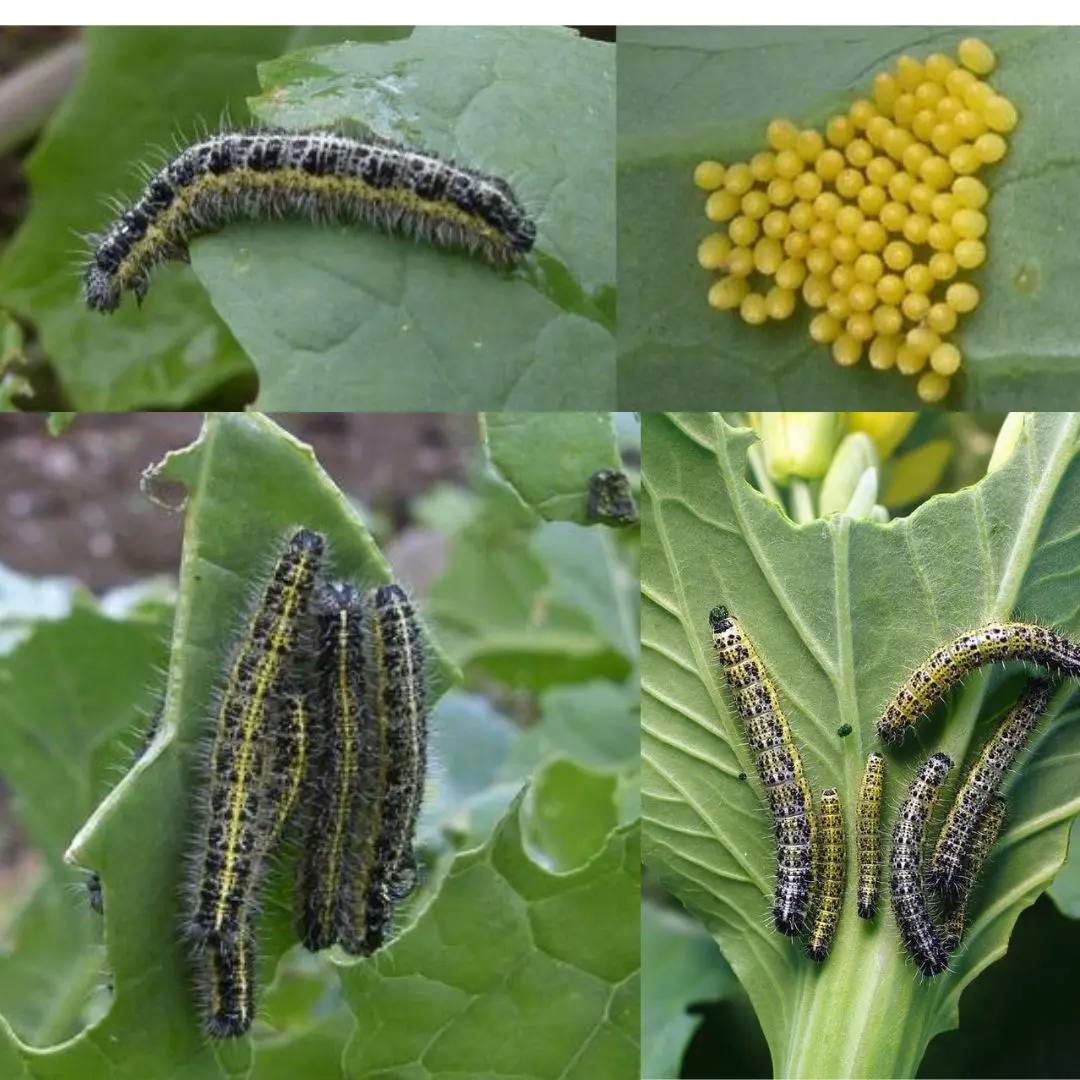INTRODUCTION OF CABBAGE ITS MANAGEMENT PRACTICES AND LAND PREPARATIONS
CABBAGE AN INTRODUCTION
Cabbage, scientifically known as Brassica oleracea, is a biennial plant that is cultivated as an annual vegetable for its compact, leafy heads, which can be green, red (purple), or white (pale green). The weight of cabbage heads typically varies between 0.5 to 4 kilograms (1 to 9 pounds), with the smooth-leafed, firm-headed green varieties being the most prevalent. In contrast, smooth-leafed purple cabbages and crinkle-leafed savoy cabbages, available in both colors, are less commonly found. This vegetable is characterized by its multiple layers.The domestication of cabbage is believed to have occurred in Europe prior to 1000 BC, although the development of savoy varieties did not take place until the 16th century AD. By the time of the Middle Ages, cabbage had established itself as a significant component of European culinary traditions. Typically, cabbage heads are harvested within the first year of the plant's growth cycle; however, those intended for seed production are permitted to mature for a second year and must be isolated from other cole crops to avoid cross-pollination.Cabbage is recognized for its nutritional benefits, serving as an excellent source of vitamin K, vitamin C, and dietary fiber. Its versatility in cooking and health benefits have contributed to its enduring popularity in various cuisines around the world. The cultivation and consumption of cabbage continue to thrive, reflecting its historical significance and ongoing relevance in modern diets.
گوبھی، سائنسی طور پر براسیکا اولیریا کے نام سے جانا جاتا ہے، ایک دو سالہ پودا ہے جو اس کے کمپیکٹ، پتوں والے سروں کے لیے سالانہ سبزی کے طور پر کاشت کیا جاتا ہے، جو سبز، سرخ (جامنی) یا سفید (ہلکا سبز) ہو سکتا ہے۔ گوبھی کے سروں کا وزن عام طور پر 0.5 سے 4 کلوگرام (1 سے 9 پاؤنڈ) کے درمیان ہوتا ہے، جس میں ہموار پتوں والی، مضبوط سروں والی سبز قسمیں سب سے زیادہ پائی جاتی ہیں۔ اس کے برعکس، ہموار پتوں والی ارغوانی گوبھی اور کرینکل لیف والی سیوائے گوبھی، جو دونوں رنگوں میں دستیاب ہیں، کم پائی جاتی ہیں۔ اس سبزی کی خصوصیات اس کی متعدد تہوں سے ہوتی ہے۔ گوبھی کا پالنے کا خیال یورپ میں 1000 قبل مسیح سے پہلے ہوا تھا، حالانکہ سیوائے کی اقسام کی ترقی 16ویں صدی عیسوی تک نہیں ہوئی تھی۔ قرون وسطی کے وقت تک، گوبھی نے خود کو یورپی کھانوں کی روایات کے ایک اہم جزو کے طور پر قائم کر لیا تھا۔ عام طور پر، گوبھی کے سر پودے کی نشوونما کے پہلے سال کے اندر کاٹے جاتے ہیں۔ تاہم، جو بیج کی پیداوار کے لیے ہیں انہیں دوسرے سال کے لیے پختہ ہونے کی اجازت ہے اور کراس پولینیشن سے بچنے کے لیے اسے دیگر کول فصلوں سے الگ کر دینا چاہیے۔ غذائی ریشہ. کھانا پکانے میں اس کی استعداد اور صحت کے فوائد نے دنیا بھر کے مختلف کھانوں میں اس کی پائیدار مقبولیت میں اہم کردار ادا کیا ہے۔ گوبھی کی کاشت اور اس کا استعمال ترقی کی منازل طے کر رہا ہے، جو اس کی تاریخی اہمیت اور جدید خوراک میں جاری مطابقت کو ظاہر کرتا ہے۔
Soil Types
It can be cultivated in a variety of soil types; however, optimal growth is achieved in well-drained loamy soil that possesses a good capacity for moisture retention. The ideal pH level for the soil should fall between 5.5 and 6.5, as the plant does not flourish in highly acidic soils.
اسے مختلف قسم کی مٹی میں کاشت کیا جا سکتا ہے۔ تاہم، زیادہ سے زیادہ نمو اچھی طرح سے نکاسی والی چکنی مٹی میں حاصل کی جاتی ہے جو نمی کو برقرار رکھنے کی اچھی صلاحیت رکھتی ہے۔ مٹی کے لیے مثالی پی ایچ لیول 5.5 اور 6.5 کے درمیان گرنا چاہیے، کیونکہ پودا بہت تیزابیت والی مٹی میں نہیں پھلتا ہے۔
Temperature Required for Cabbage cultivation(Pk) | Rain Requirements (Pk) | Harvesting Temperature for cabbage(Pk) | Sowing Temperature for cabbage(Pk) |
12-30 C | 10-15 mm in winter | 10-15 C in summer | 25-30 C |
12-30 C | 25-26 mm in summer | 21-26 C in winter | 25-30 C |
Land Preparation of cabbage
The process of land preparation involves achieving a fine tilth in the soil through thorough ploughing. It is recommended to plough the land three to four times, followed by leveling the soil to ensure an even surface. During the final ploughing, it is essential to incorporate well-decomposed cow dung into the soil to enhance its fertility. The optimal period for sowing seeds in plain areas is between September and October. For spacing, it is advisable to maintain a distance of 45 x 45 cm for early-season crops, while late-maturing crops should be spaced at 60 x 45 cm. The seeds should be sown at a depth of 1 to 2 cm to promote healthy growth.Two effective methods for sowing include dibbling and transplanting. Initially, seeds can be sown in a nursery, where they should receive appropriate irrigation and fertilizer according to their needs. The seedlings will be ready for transplantation approximately 25 to 30 days after sowing, and it is recommended to use seedlings that are three to four weeks old for this process.
زمین کی تیاری کے عمل میں مکمل ہل چلا کر مٹی میں ٹھیک کھیتی حاصل کرنا شامل ہے۔ زمین کو تین سے چار بار ہل چلانے کی سفارش کی جاتی ہے، اس کے بعد زمین کو ہموار کرنے کے لیے ہموار سطح کو یقینی بنایا جائے۔ آخری ہل چلانے کے دوران، اس کی زرخیزی کو بڑھانے کے لیے مٹی میں اچھی طرح سے گلے ہوئے گوبر کو شامل کرنا ضروری ہے۔ میدانی علاقوں میں بیج بونے کا بہترین وقت ستمبر اور اکتوبر کے درمیان ہے۔ وقفہ کاری کے لیے، ابتدائی موسم کی فصلوں کے لیے 45 x 45 سینٹی میٹر کا فاصلہ برقرار رکھنے کا مشورہ دیا جاتا ہے، جبکہ دیر سے پکنے والی فصلوں میں 60 x 45 سینٹی میٹر کا فاصلہ رکھنا چاہیے۔ صحت مند نشوونما کو فروغ دینے کے لیے بیجوں کو 1 سے 2 سینٹی میٹر کی گہرائی میں بونا چاہیے۔ ابتدائی طور پر، بیج نرسری میں بویا جا سکتا ہے، جہاں انہیں ان کی ضروریات کے مطابق مناسب آبپاشی اور کھاد ملنی چاہیے۔ بیج بونے کے تقریباً 25 سے 30 دن بعد پیوند کاری کے لیے تیار ہو جائیں گے، اور اس عمل کے لیے تین سے چار ہفتے پرانے پودوں کو استعمال کرنے کی سفارش کی جاتی ہے۔
Fertilizers Recommendations for cabbage
The fertilizer requirements per acre include half a bag of SOP and one to two bags of Nitrophos. Additionally, it is recommended to incorporate organic amendments such as Feedex, Hextar Hexahumic Acid, and Soil Saver, among others
کھاد کی فی ایکڑ ضروریات میں آدھا تھیلا ایس او پی اور ایک سے دو تھیلے نائٹرو فاس شامل ہیں۔ مزید برآں، نامیاتی ترامیم جیسے Feedex، Hextar Hexahumic Acid، اور Soil Saver کو شامل کرنے کی سفارش کی جاتی ہے۔
Seed Rate and Seed Treatments
The recommended seed rate for sowing is between 120 grams per acre,10-12 packs of seeds. It is crucial to ensure that the seeds are treated prior to planting to enhance their viability and resistance to diseases. A suggested method for seed treatment involves soaking the seeds in hot water at a temperature of 50°C for 30 minutes or using a streptocycline solution at a concentration of 0.01 grams per liter for a duration of two hours. After treatment, the seeds should be dried in a shaded area before being sown in prepared beds.Black rot is predominantly observed during the Rabi season, making it essential to treat seeds with Copper oxychloride as a preventive measure. This can be achieved by immersing the seeds in a Copper oxychloride solution at a concentration of 1 gram per liter for 30 minutes, followed by drying them in a sheltered location. Additionally, crops cultivated in sandy soils are more susceptible to stem rot; therefore, it is advisable to treat the seeds with Carbendazim 50% WP at a rate of 3 grams per kilogram of seed to mitigate this risk.Also you can treat the seed with combinex ultra to avoid bacterial and fungal attacks.
بوائی کے لیے تجویز کردہ بیج کی شرح 120 گرام فی ایکڑ، بیج کے 10-12 پیک کے درمیان ہے۔ یہ یقینی بنانا بہت ضروری ہے کہ پودے لگانے سے پہلے بیجوں کا علاج کیا جائے تاکہ ان کی عملداری اور بیماریوں کے خلاف مزاحمت بڑھ سکے۔ بیج کے علاج کے لیے تجویز کردہ طریقہ میں بیجوں کو گرم پانی میں 50 ڈگری سینٹی گریڈ کے درجہ حرارت پر 30 منٹ تک بھگو دینا یا 0.01 گرام فی لیٹر کے ارتکاز پر دو گھنٹے کے لیے اسٹریپٹوسائکلائن محلول استعمال کرنا شامل ہے۔ علاج کے بعد، بیجوں کو تیار شدہ بستروں میں بونے سے پہلے کسی سایہ دار جگہ پر خشک کر دینا چاہیے۔ ربیع کے موسم میں کالی سڑ بنیادی طور پر دیکھی جاتی ہے، جس سے بچاؤ کے اقدام کے طور پر کاپر آکسی کلورائیڈ کے ساتھ بیجوں کا علاج کرنا ضروری ہے۔ یہ بیجوں کو کاپر آکسی کلورائیڈ کے محلول میں 1 گرام فی لیٹر کے ارتکاز میں 30 منٹ تک ڈبو کر حاصل کیا جا سکتا ہے، اس کے بعد انہیں کسی محفوظ جگہ پر خشک کر کے۔ مزید برآں، ریتلی مٹی میں کاشت کی گئی فصلیں تنے کے سڑنے کے لیے زیادہ حساس ہوتی ہیں۔ اس لیے اس خطرے کو کم کرنے کے لیے بیجوں کو کاربینڈازم 50% ڈبلیو پی کے ساتھ 3 گرام فی کلوگرام کی شرح سے علاج کرنے کا مشورہ دیا جاتا ہے۔ اس کے علاوہ آپ بیکٹیریا اور فنگل کے حملوں سے بچنے کے لیے بیج کو کمبائنیکس الٹرا کے ساتھ علاج کر سکتے ہیں۔
Weeds Management and Irrigation Strategy for Cabbage
Weed management should involve the application of pre emrgence weedicides Pendimethalin at a rate of 1 liter per acre, administered four days prior to the transplantation of seedlings, followed by a manual weeding process after the herbicide has been applied.Irrigation practices should commence immediately after the seedlings are transplanted. Depending on the specific soil and climatic conditions, irrigation should be carried out at intervals of 15 to 18 days during the winter season. It is essential to provide an adequate amount of water to the young seedlings during their vegetative growth stage, as excessive watering after the formation of heads can lead to cracking.
جڑی بوٹیوں کے انتظام میں 1 لیٹر فی ایکڑ کی شرح سے پہلے سے پیدا ہونے والی جڑی بوٹیوں کی دوائی Pendimethalin کا استعمال شامل ہونا چاہئے، جو پودوں کی پیوند کاری سے چار دن پہلے دیا جاتا ہے، اس کے بعد جڑی بوٹی مار دوا لگانے کے بعد دستی ویڈنگ کا عمل ہوتا ہے۔ seedlings ٹرانسپلانٹ کر رہے ہیں. مخصوص زمین اور موسمی حالات کے مطابق سردیوں کے موسم میں 15 سے 18 دن کے وقفے سے آبپاشی کی جائے۔ یہ ضروری ہے کہ جوان پودوں کو ان کی پودوں کی نشوونما کے مرحلے کے دوران مناسب مقدار میں پانی فراہم کیا جائے، کیونکہ سروں کی تشکیل کے بعد ضرورت سے زیادہ پانی دینے سے پھٹ پڑ سکتی ہے۔
Insects pest of cabbage
- Thrips
- Aphids
- Diamond Back Moth
- Cut Worms
- Leaf Eating Catterpiller
- Wild Boars
Cabbage Thrips
Management of sucking pests, specifically thrips, can be effectively achieved through the application of various control agents. Among these, Pirate is recommended at a dosage of 100 milliliters per 100 liters of water. Additionally, Imidacloprid 70% WG, Admiral, and Actara should be utilized according to the instructions provided on their respective labels. For a combination treatment, Nitenpyram and acephate can be applied at a rate of 50 grams per 100 liters of water, while Abamectin is suggested at 400 milliliters per 100 liters of water. Other products such as flonicamid, ulala, radiant, and Confidor should also be used in accordance with the guidelines specified on their labels. It is crucial to adhere to these recommendations to ensure effective control of thrips and to maintain the health of the plants being treated. Proper application and dosage are essential for achieving optimal results in pest management.
چوسنے والے کیڑوں کا انتظام، خاص طور پر تھرپس، کو مختلف کنٹرول ایجنٹوں کے استعمال سے مؤثر طریقے سے حاصل کیا جا سکتا ہے۔ ان میں سے، 100 ملی لیٹر فی 100 لیٹر پانی کی خوراک میں پائریٹ کی سفارش کی جاتی ہے۔ مزید برآں، Imidacloprid 70% WG، Admiral، اور Actara کو ان کے متعلقہ لیبلز پر فراہم کردہ ہدایات کے مطابق استعمال کیا جانا چاہیے۔ مشترکہ علاج کے لیے، Nitenpyram اور acephate کو 50 گرام فی 100 لیٹر پانی کی شرح سے استعمال کیا جا سکتا ہے، جب کہ Abamectin 400 ملی لیٹر فی 100 لیٹر پانی میں تجویز کیا جاتا ہے۔ دیگر مصنوعات جیسے flonicamid، ulala، radiant، اور Confidor کو بھی ان کے لیبلز پر بیان کردہ رہنما خطوط کے مطابق استعمال کیا جانا چاہیے۔ تھرپس کے موثر کنٹرول کو یقینی بنانے اور علاج کیے جانے والے پودوں کی صحت کو برقرار رکھنے کے لیے ان سفارشات پر عمل کرنا بہت ضروری ہے۔ کیڑوں کے انتظام میں بہترین نتائج حاصل کرنے کے لیے مناسب استعمال اور خوراک ضروری ہے۔
Cabbage Aphids
Aphids, commonly referred to as sucking pests, can be managed through various control methods. Organic approaches include the application of surf spray, the use of blue and yellow sticky traps, mulching with aluminum foil, and the implementation of garlic and mineral oil sprays. Additionally, chemical options such as Bifenthrin should be utilized in accordance with the manufacturer's instructions, while imidacloprid can be applied at a rate of 250 milliliters per acre.Other chemical treatments include Acetamiprid, which should be used as directed on the label,, per 100 liters of water. For combined treatments, Abamectin can be mixed at 500 milliliters per 200 liters of water, while a combination of Lambda cyhalothrin and Thiamethoxam should be applied at 160 milliliters per 100 liters of water. Clothianidin can be used at a rate of 60 to 120 grams per 100 liters of water, and Nitenpyram combined with Thiamethoxam is recommended at 50 grams per 100 liters of water.
افڈس، جسے عام طور پر چوسنے والے کیڑوں کے نام سے جانا جاتا ہے، کو کنٹرول کے مختلف طریقوں سے منظم کیا جا سکتا ہے۔ نامیاتی طریقوں میں سرف سپرے کا استعمال، نیلے اور پیلے چپچپا جالوں کا استعمال، ایلومینیم ورق کے ساتھ ملچنگ، اور لہسن اور معدنی تیل کے اسپرے کا نفاذ شامل ہیں۔ مزید برآں، کیمیکل آپشنز جیسے کہ Bifenthrin کو مینوفیکچرر کی ہدایات کے مطابق استعمال کیا جانا چاہیے، جبکہ imidacloprid کو 250 ملی لیٹر فی ایکڑ کی شرح سے لاگو کیا جا سکتا ہے۔ دیگر کیمیائی علاج میں Acetamiprid شامل ہیں، جو لیبل،، فی 100 لیٹر پانی پر ہدایت کے مطابق استعمال کیا جانا چاہیے۔ مشترکہ علاج کے لیے، Abamectin کو 500 ملی لیٹر فی 200 لیٹر پانی میں ملایا جا سکتا ہے، جب کہ Lambda cyhalothrin اور Thiamethoxam کے مرکب کو 160 ملی لیٹر فی 100 لیٹر پانی میں ملایا جانا چاہیے۔ Clothianidin کو 60 سے 120 گرام فی 100 لیٹر پانی کی شرح سے استعمال کیا جا سکتا ہے، اور Nitenpyram کو Thiamethoxam کے ساتھ ملا کر 50 گرام فی 100 لیٹر پانی کی سفارش کی جاتی ہے۔
Cabbage Diamond Back Moth
The Diamond Back Moth is classified as a sucking pest. For its control,
a combination of Chloro and lambda is recommended. The appropriate application
rate is 250 milliliters of each substance per 100 liters of water.
Cabbage Cutworms
Cutworm is classified as a type of sucking pest that can cause significant damage to crops. To manage this pest effectively, the application of Furadon granules is recommended, with a dosage of 10 kilograms per acre. Additionally, Cypermethrin can be utilized, applied in a drop-wise manner during irrigation to enhance its efficacy in controlling cutworm populations.
ڈائمنڈ بیک موتھ کو چوسنے والے کیڑے کے طور پر درجہ بندی کیا گیا ہے۔ اس کے کنٹرول کے لیے، کلورو اور لیمبڈا کے امتزاج کی سفارش کی جاتی ہے۔ مناسب درخواست کی شرح 250 ملی لیٹر ہر مادہ فی 100 لیٹر پانی ہے۔
گوبھی کٹ کیڑے کو چوسنے والے کیڑوں کی ایک قسم کے طور پر درجہ بندی کیا جاتا ہے جو فصلوں کو کافی نقصان پہنچا سکتا ہے۔ اس کیڑے کو مؤثر طریقے سے سنبھالنے کے لیے، 10 کلو گرام فی ایکڑ خوراک کے ساتھ، Furadon دانے داروں کے استعمال کی سفارش کی جاتی ہے۔ مزید برآں، Cypermethrin کا استعمال کیا جا سکتا ہے، اسے آبپاشی کے دوران ڈراپ وار طریقے سے استعمال کیا جا سکتا ہے تاکہ کٹ کیڑے کی آبادی کو کنٹرول کرنے میں اس کی افادیت کو بڑھایا جا سکے۔
Cabbage Leaf Eating Caterpillars
Leaf-eating caterpillars are classified as sucking pests, which can significantly impact plant health. To manage these pests effectively, various control measures are recommended. Cypermethrin should be applied at a concentration of 2-5 ml per liter of water. Additionally, the product volium flexi should be utilized according to the instructions provided on its label. Emamectin Benzoate at a concentration of 5% is also effective, with a recommended usage of 75-150 grams per 100 liters of water. Other combinations, such as Lufenuron with Emamectin Benzoate, require 150 ml per 100 liters of water, while Carbosulfan combined with Emamectin should be used at 500 ml per 200 liters of water.Further options for pest control include the Abamectin, which should be applied at 350 ml per 100 liters of water. Other products, such as timer, match, steward, tall star, fighter133AC, and delegate, should be used strictly according to their respective labels for optimal results. It is essential to follow the specified guidelines for each product to ensure effective management of leaf-eating caterpillars while minimizing potential harm to the environment.
پتی کھانے والے کیٹرپلرز کو چوسنے والے کیڑوں کے طور پر درجہ بندی کیا جاتا ہے، جو پودوں کی صحت کو نمایاں طور پر متاثر کر سکتے ہیں۔ ان کیڑوں کو مؤثر طریقے سے سنبھالنے کے لیے، مختلف کنٹرول کے اقدامات کی سفارش کی جاتی ہے۔ Cypermethrin کو 2-5 ملی لیٹر فی لیٹر پانی کے ارتکاز پر لگانا چاہیے۔ مزید برآں، پروڈکٹ والیم فلیکسی کو اس کے لیبل پر فراہم کردہ ہدایات کے مطابق استعمال کیا جانا چاہیے۔ Emamectin Benzoate 5% کی ارتکاز میں بھی مؤثر ہے، 75-150 گرام فی 100 لیٹر پانی کے تجویز کردہ استعمال کے ساتھ۔ دیگر مرکبات، جیسے Lufenuron اور Emamectin Benzoate کے لیے 150 ملی لیٹر فی 100 لیٹر پانی کی ضرورت ہوتی ہے، جب کہ کاربوسلفن کو ایمامیکٹین کے ساتھ ملا کر 500 ملی لیٹر فی 200 لیٹر پر استعمال کیا جانا چاہیے۔ پانی۔ کیڑوں پر قابو پانے کے مزید اختیارات میں ابامیکٹین شامل ہے، جسے 350 ملی لیٹر فی 100 لیٹر پانی پر لگایا جانا چاہیے۔ دیگر پروڈکٹس، جیسے ٹائمر، میچ، اسٹیورڈ، ٹال اسٹار، فائٹر 133AC، اور ڈیلیگیٹ، کو ان کے متعلقہ لیبلز کے مطابق سختی سے استعمال کیا جانا چاہیے۔ بہترین نتائج. ماحول کو ممکنہ نقصان کو کم کرتے ہوئے پتی کھانے والے کیٹرپلرز کے موثر انتظام کو یقینی بنانے کے لیے ہر پروڈکٹ کے لیے مخصوص ہدایات پر عمل کرنا ضروری ہے۔
Cabbage Wild Boars
Wild Boar Disease Category: Sucking Pests Management Strategy Ingredients for dough cake (1 kg): Combine 800 grams of wheat flour, 50 grams of sugar, 100 grams of cooking oil, and 50 grams of Racumin (0.75).
Cabbage Fungal Disease
- Downy Mildew of Cabbage
- Black Rot of Cabbage
Downy Mildew of Cabbage
Downy Mildew is classified under fungal diseases, necessitating specific control measures for effective management. Various products are available for use, each requiring adherence to the manufacturer's label instructions to ensure optimal results. Among these, Defeater Plus (Kanzo), Topsun, Cabrio Top, Mancozeb, are recommended, all of which should be applied according to the guidelines provided on their respective labels.Additionally, combinations of active ingredients such as Pyraclostrobin and Dimethomorph, as well as Chlorothalonil and Metalaxyl, are suggested at a rate of 250 grams per 100 liters of water. For treatments involving Mancozeb combined with Metalaxyl or Mefenoxam, the recommended dosage is 100 grams and 250 grams per 100 liters of water, respectively. Following these application rates and guidelines is crucial for effective disease control.
کو کوکیی بیماریوں کے تحت درجہ بندی کیا گیا ہے، جس کے موثر انتظام کے لیے مخصوص کنٹرول کے اقدامات کی ضرورت ہے۔ مختلف مصنوعات استعمال کے لیے دستیاب ہیں، ہر ایک کو بہترین نتائج کو یقینی بنانے کے لیے مینوفیکچرر کے لیبل کی ہدایات پر عمل کرنے کی ضرورت ہوتی ہے۔ ان میں سے، Defeater Plus (Kanzo)، Topsun مزید برآں، پائریکلوسٹروبن اور ڈیمیتھومورف، نیز کلوروتھالونیل اور میٹالیکسائل کے مجموعے 250 گرام فی 100 لیٹر پانی کی شرح سے تجویز کیے جاتے ہیں۔ مینکوزیب کو میٹالیکسائل یا میفینوکسام کے ساتھ شامل علاج کے لیے، تجویز کردہ خوراک بالترتیب 100 گرام اور 250 گرام فی 100 لیٹر پانی ہے۔ ان درخواست کی شرحوں اور رہنما خطوط پر عمل کرنا بیماری کے مؤثر کنٹرول کے لیے بہت ضروری ہے۔
Black Rot of Cabbage
Black Rot is classified under fungal diseases. For its control, several fungicides can be utilized, including Mancozeb, and Neem oil, each of which should be applied according to the instructions provided on their respective labels.
Nutrient Deficiency Disease
Tip Burn of Cabbage
Tip burn is a physiological disorder that arises primarily from insufficient calcium levels coupled with elevated sodium concentrations in the soil. To mitigate this issue, the application of calcium is recommended, as it can effectively address the underlying deficiency and restore plant health.
Cabbage Splitting
Cabbage splitting is a condition that often occurs due to moisture stress followed by excessive rainfall. To avert this problem, it is crucial to implement proper irrigation practices. Additionally, it is important to note that different cultivars exhibit varying degrees of susceptibility to splitting, which should be considered when selecting varieties for cultivation.
The Dark Petiole of Cabbage
The black petiole disorder is linked to an imbalance between potassium and phosphorus, alongside elevated nitrogen levels. To prevent this condition, it is advisable to apply fertilizers in accordance with the recommended dosage. This approach can help maintain nutrient balance and promote optimal growth in plants.
ٹپ برن ایک جسمانی عارضہ ہے جو بنیادی طور پر کیلشیم کی ناکافی سطح کے ساتھ ساتھ مٹی میں سوڈیم کے بلند ہونے سے پیدا ہوتا ہے۔ اس مسئلے کو کم کرنے کے لیے، کیلشیم کے استعمال کی سفارش کی جاتی ہے، کیونکہ یہ بنیادی کمی کو مؤثر طریقے سے دور کر سکتا ہے اور پودوں کی صحت کو بحال کر سکتا ہے
گوبھی کی تقسیم ایک ایسی حالت ہے جو اکثر نمی کے دباؤ کی وجہ سے ہوتی ہے جس کے بعد زیادہ بارش ہوتی ہے۔ اس مسئلے سے بچنے کے لیے، آبپاشی کے مناسب طریقوں کو نافذ کرنا بہت ضروری ہے۔ مزید برآں، یہ نوٹ کرنا ضروری ہے کہ مختلف قسمیں تقسیم کے لیے حساسیت کی مختلف ڈگریوں کی نمائش کرتی ہیں، جس پر غور کیا جانا چاہیے جب کاشت کے لیے اقسام کا انتخاب کیا جائے۔
بلیک پیٹیول ڈس آرڈر کا تعلق پوٹاشیم اور فاسفورس کے درمیان عدم توازن کے ساتھ ساتھ نائٹروجن کی بلند سطح سے ہے۔ اس حالت کو روکنے کے لیے تجویز کردہ خوراک کے مطابق کھاد ڈالنے کا مشورہ دیا جاتا ہے۔ یہ نقطہ نظر غذائیت کے توازن کو برقرار رکھنے اور پودوں میں بہترین نشوونما کو فروغ دینے میں مدد کر سکتا ہے۔
